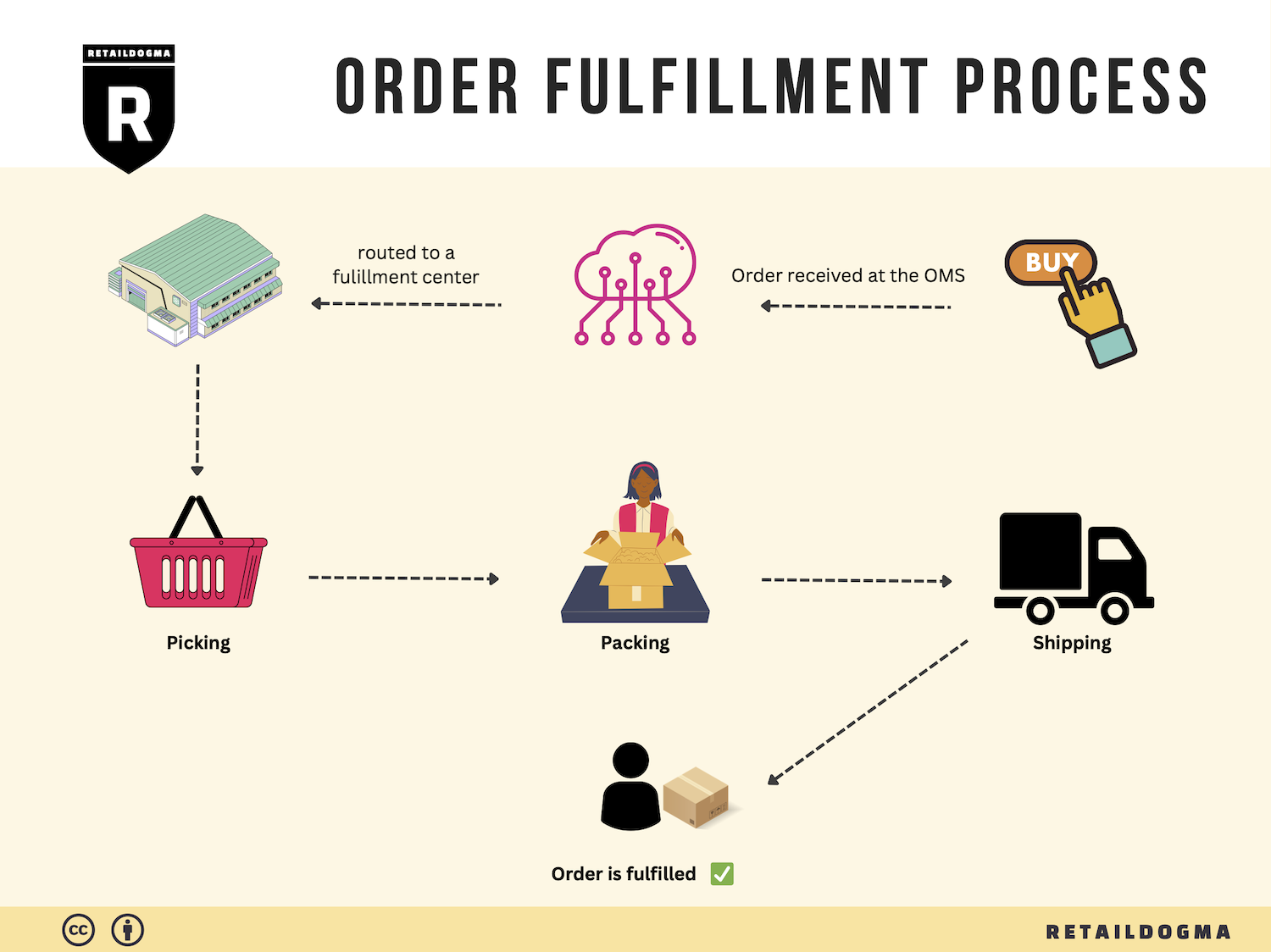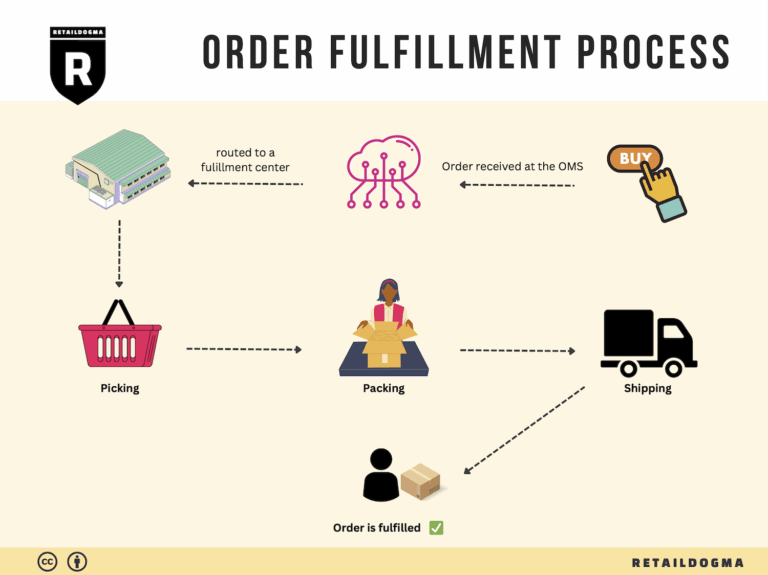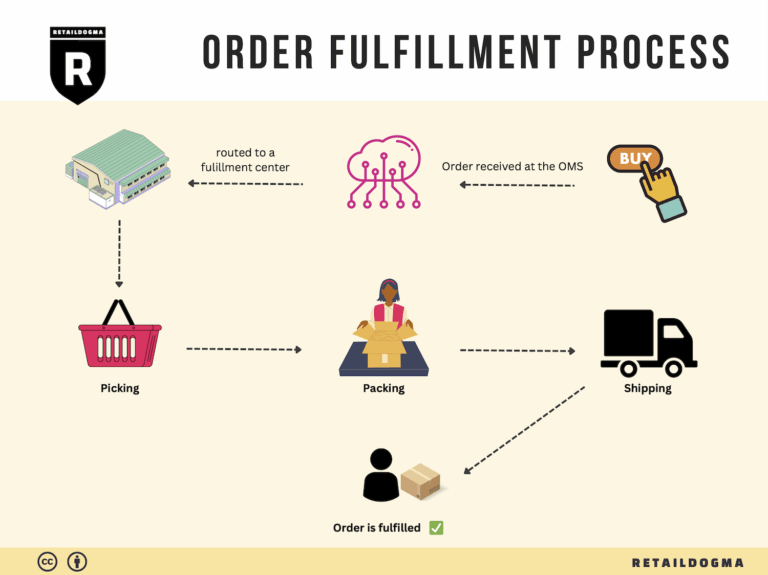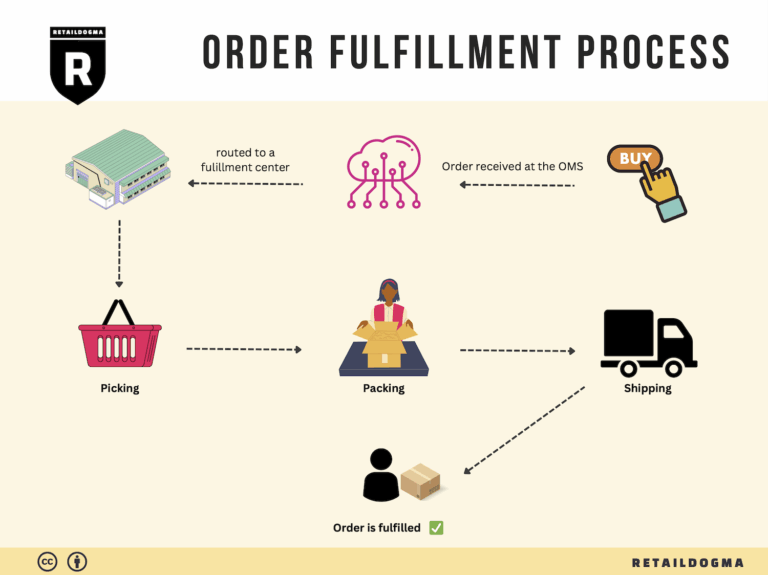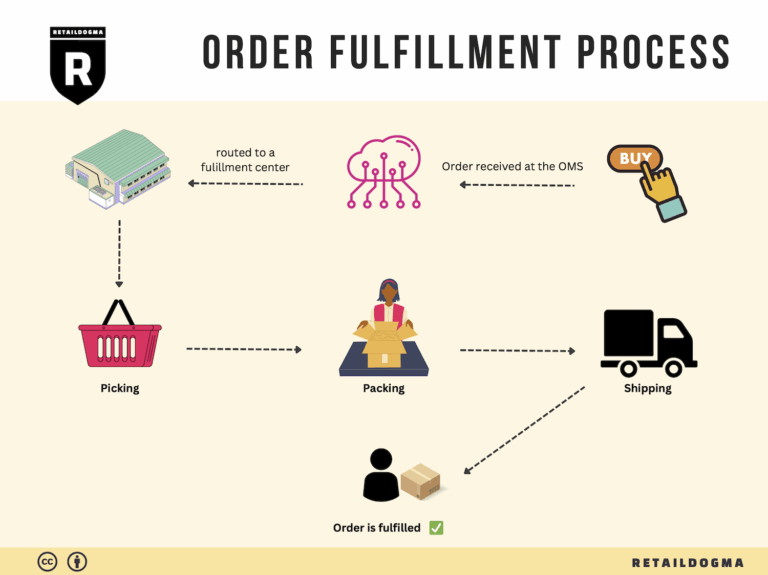Ecommerce Fulfillment Services: The Ultimate Guide (2025)
What is E-commerce Fulfillment? An Introduction for Growing Businesses
Understanding the Challenges of E-commerce Fulfillment
As your online business begins to grow, one common challenge surfaces: the overwhelming task of packing and shipping orders. Many entrepreneurs find themselves bogged down in logistics, which can detract from their ability to focus on scaling their sales and improving their product offerings. The fulfillment process—the journey of getting a product from your warehouse to your customer’s doorstep—can quickly become a logistical nightmare if not managed efficiently.
What is E-commerce Fulfillment?
At its core, e-commerce fulfillment encompasses all the steps necessary to process and deliver an order to a customer. This includes receiving inventory, picking and packing products, shipping orders, and managing returns. Understanding this process is crucial for any growing business aiming to provide a seamless shopping experience and maintain customer satisfaction.
What This Guide Will Cover
In this comprehensive guide, we will delve into several key aspects of e-commerce fulfillment that can help you streamline your operations:
-
Fulfillment Models: We will explore various fulfillment models, including Third-Party Logistics (3PL) and Fulfillment by Amazon (FBA). Each model has its own advantages and drawbacks, and understanding them will help you make informed choices about how to manage your logistics.
-
Core Services: You’ll learn about the essential services offered by fulfillment partners, such as inventory management, order processing, shipping logistics, and customer service. These services are designed to enhance efficiency and ensure that your orders are handled with care.
-
Choosing the Right Partner: Selecting a fulfillment partner can be daunting. We’ll provide practical tips on what to look for, including technology integration, location advantages, and scalability options, so you can find a partner that aligns with your business goals.
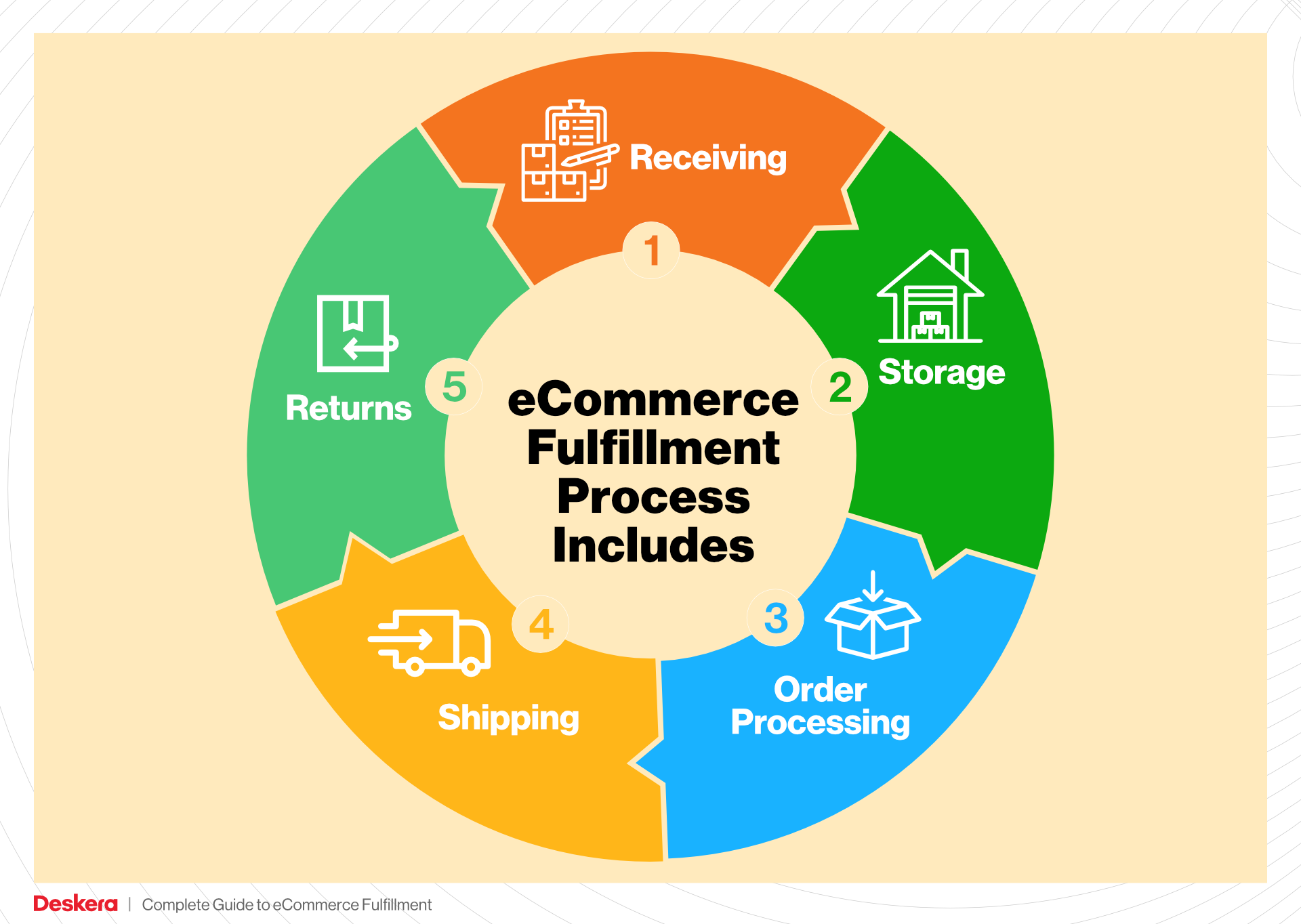
-
Pricing Structures: Lastly, we will break down typical pricing structures for fulfillment services. Understanding the cost implications will allow you to budget effectively and maximize your profit margins.
Empowering Your Business Decisions
The goal of this guide is to empower you, the business owner or operations manager, to make smart decisions regarding your logistics and fulfillment processes. By grasping the intricacies of e-commerce fulfillment, you can enhance your operational efficiency, improve customer satisfaction, and ultimately drive growth for your business. Let’s get started on the path to fulfilling your e-commerce potential!
What You’ll Learn In This Guide
- What is E-commerce Fulfillment? An Introduction for Growing Businesses
- The Order Fulfillment Process: From ‘Buy’ Button to Customer’s Door
- Comparing Fulfillment Models: In-House vs. 3PL vs. Dropshipping
- A Deep Dive into Amazon FBA: Pros, Cons, and Who It’s For
- Core Services Offered by Fulfillment Centers
- How to Choose a Fulfillment Partner: A 6-Point Checklist
- Understanding Fulfillment Pricing: A Breakdown of Common Fees
- Frequently Asked Questions (FAQs) about Fulfillment
- Conclusion: Is Outsourcing Fulfillment the Right Move for Your Business?
- Important Disclaimer
The Order Fulfillment Process: From ‘Buy’ Button to Customer’s Door
1. Receiving Inventory
The order fulfillment process begins with receiving inventory at the fulfillment center. When products arrive, they are checked against shipping documents to ensure accuracy in quantity and quality. This step is crucial as it establishes the baseline inventory levels that will be used in the subsequent stages.
Key terms associated with this step include SKU (Stock Keeping Unit), which is a unique identifier for each product. Each item is scanned and recorded into the inventory management system, allowing businesses to track stock levels in real-time. Accurate receiving is vital for maintaining inventory accuracy, which helps prevent stockouts or overstock situations that can hinder sales and increase costs.
2. Warehouse Storage
Once the inventory has been received and verified, it moves to the warehouse storage phase. Here, products are organized systematically based on various factors such as size, weight, and demand frequency. The goal is to optimize space and make retrieval efficient.
This step is important because well-organized storage reduces the time taken to locate items during order picking. A common strategy employed is ABC analysis, where products are categorized into three classes (A, B, C) based on their value and turnover rate. High-value items are stored in easily accessible areas, while slower-moving products may be stored further back. Proper storage management minimizes the risk of errors and enhances the overall efficiency of the fulfillment process.
3. Order Picking
Order picking is the process of retrieving items from the warehouse based on customer orders. This step is critical, as it directly affects order accuracy and customer satisfaction. Efficient picking ensures that the right products are selected and prepared for shipment in a timely manner.
A key term in this phase is pick lists, which are generated for each order and indicate the items and quantities to be retrieved. Various picking methods can be utilized, including single order picking, batch picking, and zone picking, depending on the volume of orders and warehouse layout. The use of technology, such as handheld scanners or automated picking systems, can significantly enhance accuracy and speed, reducing the likelihood of errors that could lead to returns or dissatisfied customers.
4. Order Packing
After items have been picked, they move to the packing stage. This process involves securely packaging products for shipment to ensure they arrive at the customer’s doorstep in perfect condition. Packing is essential not only for protecting the items during transit but also for maximizing shipping efficiency.
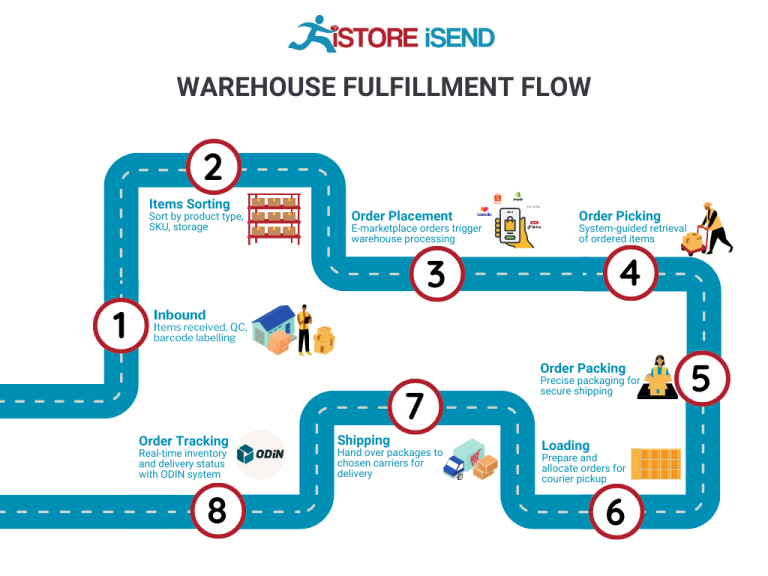
The key term here is packing slips, which are included in the shipment to provide customers with a summary of their order. Proper packing techniques, such as using the right-sized boxes and cushioning materials, are important to prevent damage. Additionally, businesses may use branded packaging to enhance the customer experience and reinforce brand identity. Efficient packing processes can reduce shipping costs by minimizing dimensional weight and ensuring that packages fit optimally on delivery vehicles.
5. Shipping & Delivery
The final step in the order fulfillment process is shipping and delivery. Once packages are packed, they are labeled and prepared for shipment to the customer. This stage is crucial as it directly impacts the speed and reliability of the delivery, which are key factors in customer satisfaction.
A term associated with this step is last-mile delivery, which refers to the final leg of the delivery journey from a distribution center to the customer’s address. Efficient last-mile delivery is essential for meeting customer expectations, particularly in e-commerce, where fast shipping is a competitive advantage. Businesses often collaborate with third-party logistics providers (3PLs) or utilize their own delivery networks to optimize this process. Monitoring delivery performance through tracking systems can provide valuable insights into operational efficiency and customer feedback, allowing for continuous improvement in the fulfillment process.
By understanding and optimizing each of these five steps—receiving inventory, warehouse storage, order picking, order packing, and shipping & delivery—e-commerce businesses can enhance their order fulfillment process, leading to improved customer satisfaction and increased operational efficiency.
Comparing Fulfillment Models: In-House vs. 3PL vs. Dropshipping
Fulfillment Models Comparison
| Model | Who Handles Inventory | Best For (Business Stage) | Key Advantage | Key Disadvantage |
|---|---|---|---|---|
| In-House Fulfillment | The business itself | Established brands with scale | Full control over inventory | High operational costs and risks |
| Third-Party Logistics (3PL) | A separate logistics provider | Growing businesses seeking efficiency | Scalability and expertise | Less control over inventory and processes |
| Dropshipping | Supplier or manufacturer | Startups and small businesses | Low overhead and no inventory risk | Lower margins and potential quality issues |
In-House Fulfillment
In-house fulfillment is a model where the e-commerce business manages its own inventory, warehousing, and shipping operations. This model is often adopted by established brands that have sufficient scale and resources to maintain their logistics processes. The key advantage of in-house fulfillment is that it provides businesses with complete control over their inventory, allowing for tailored processes that can enhance customer service and delivery times. Businesses can implement their own quality control measures and have the flexibility to adjust operations quickly in response to market changes.
However, in-house fulfillment also comes with significant disadvantages. It requires substantial investment in warehouse space, staff, technology, and infrastructure. These operational costs can be particularly burdensome for small to mid-sized businesses. Additionally, managing logistics can distract from the core business focus, especially if the company lacks expertise in supply chain management. The risk of holding excess inventory can also lead to financial losses if demand fluctuates unexpectedly.
Third-Party Logistics (3PL)
Third-party logistics (3PL) is a fulfillment model where businesses outsource their logistics operations to specialized providers. These providers manage warehousing, inventory, and shipping, allowing businesses to focus on core competencies like marketing and product development. This model is particularly beneficial for growing businesses that require scalability without the burden of managing logistics themselves.
One of the primary advantages of 3PL is its ability to provide expertise and efficiency in logistics management, often leveraging advanced technology and established networks to optimize shipping and fulfillment processes. This can lead to faster delivery times and reduced shipping costs. Furthermore, 3PL providers typically offer flexible solutions that can be adjusted based on seasonal demand or business growth.
However, the downside of using 3PL services is the loss of direct control over inventory and fulfillment processes. Businesses may face challenges in ensuring quality and consistency, as they rely on third-party providers to uphold their standards. Communication issues can also arise, leading to potential delays or errors in order fulfillment. As businesses scale, it’s essential to choose a reputable 3PL partner that aligns with their operational needs and customer service expectations.
Dropshipping
Dropshipping is a fulfillment model that allows businesses to sell products without holding any inventory. Instead, when a business sells a product, it purchases the item from a third-party supplier who then ships it directly to the customer. This model is especially appealing for startups and small businesses looking to minimize upfront costs and operational risks.
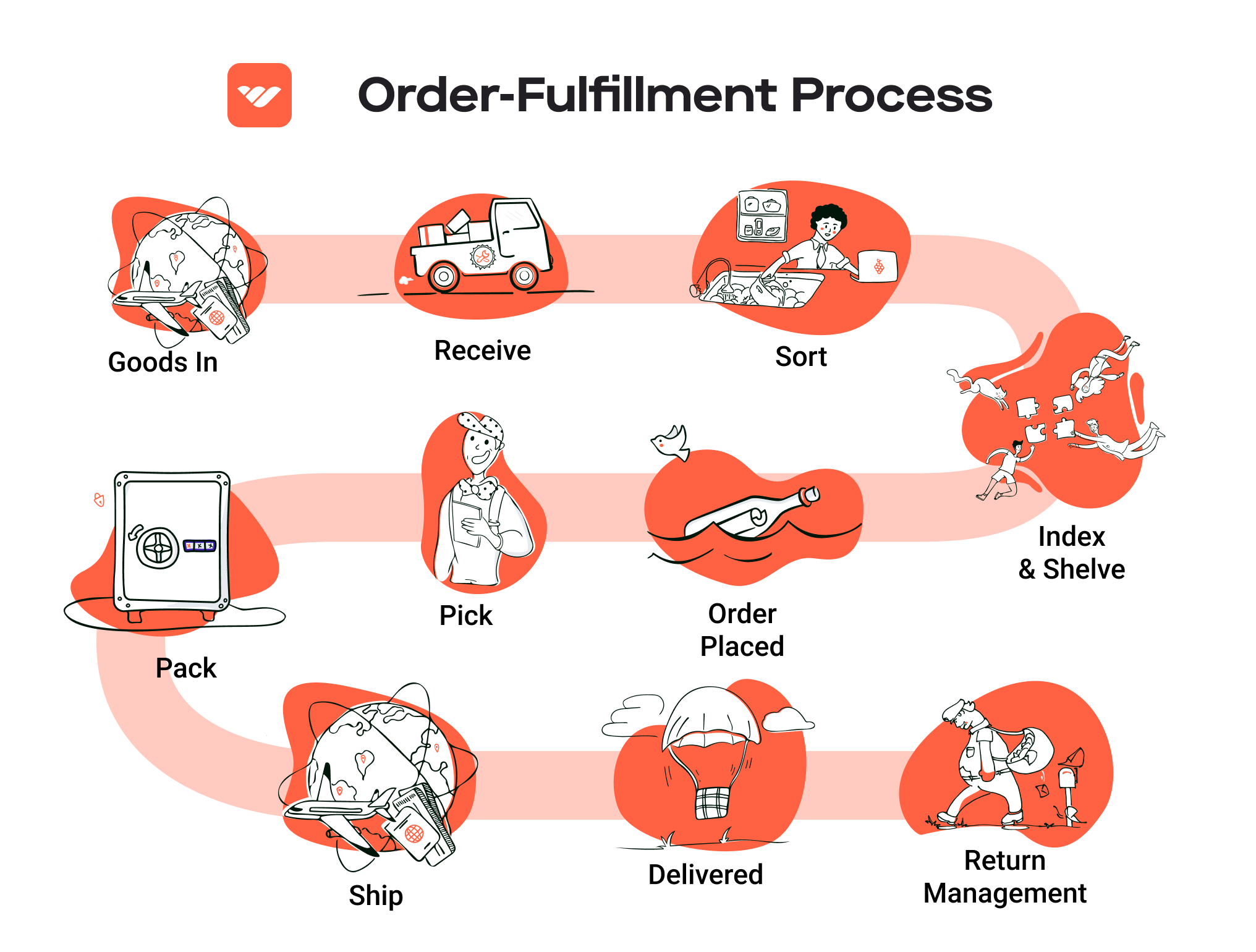
The main advantage of dropshipping is its low overhead. Since there’s no need to invest in inventory or warehouse space, businesses can operate with minimal financial risk. This model allows entrepreneurs to test new products and markets without significant investment, making it easier to pivot if necessary. Additionally, dropshipping can enable a wide product range without the burden of managing stock.
However, dropshipping is not without its challenges. The primary disadvantage is the lower profit margins, as suppliers often charge higher prices for their products. Businesses also have limited control over product quality and shipping times, which can impact customer satisfaction. Inconsistent supplier performance may lead to stockouts, delays, and other fulfillment issues that can harm a brand’s reputation. Therefore, it is crucial for businesses to establish strong relationships with reliable suppliers and invest in effective inventory management systems to mitigate these risks.
Conclusion
Choosing the right fulfillment model is critical for e-commerce businesses looking to scale effectively. Each model—whether in-house fulfillment, 3PL, or dropshipping—has its own unique advantages and disadvantages. By understanding these differences, business owners can make informed decisions that align with their operational goals, financial capabilities, and customer service expectations. As the e-commerce landscape continues to evolve, staying adaptable and responsive to market demands will be essential for success.
A Deep Dive into Amazon FBA: Pros, Cons, and Who It’s For
Understanding Fulfillment by Amazon (FBA)
Fulfillment by Amazon (FBA) is a service that allows e-commerce sellers to store their products in Amazon’s vast network of fulfillment centers. Once a seller enrolls in FBA, Amazon takes over the storage, packing, and shipping of products. The service also includes customer service and returns management, enabling sellers to focus on other aspects of their business.
When a customer places an order for a product listed as fulfilled by Amazon, the order is processed through Amazon’s systems, and the item is shipped directly from the nearest fulfillment center. This not only ensures faster delivery but also provides the seller with the advantage of Amazon’s extensive logistical capabilities.
How FBA Works
-
Product Preparation and Shipping: Sellers prepare their products according to Amazon’s guidelines, which may include labeling and packaging. Once prepared, sellers ship their inventory to Amazon’s fulfillment centers.
-
Storage: Products are stored in Amazon’s warehouses until sold. Amazon charges storage fees based on the volume of space the products occupy.
-
Order Processing: When a customer places an order, Amazon picks, packs, and ships the product. This process is optimized by advanced technology and logistics systems.
-
Customer Service and Returns: Amazon also handles customer inquiries and returns, providing a seamless experience for both the seller and the customer.
-
Payment: Sellers receive payment from Amazon, minus applicable fees, typically within a few days of the order being placed.
Pros of FBA
1. Prime Eligibility
One of the most significant advantages of FBA is that products become eligible for Amazon Prime. This membership offers customers free two-day shipping, significantly increasing the appeal of products and potentially boosting sales.
2. Customer Trust
Amazon is a trusted platform with established customer service and return policies. By using FBA, sellers benefit from this trust, which can lead to higher conversion rates and increased customer loyalty.
3. Multi-Channel Fulfillment
FBA allows sellers to use Amazon’s fulfillment services for sales made on other platforms, such as their own websites or eBay. This multi-channel fulfillment option simplifies logistics and inventory management.
4. Scalability
FBA provides an opportunity for sellers to scale their businesses without the need for additional warehousing or logistics infrastructure. Amazon’s extensive network allows sellers to reach a broader audience quickly.
5. Time Savings
By outsourcing fulfillment, sellers can focus on core business activities such as marketing, product development, and customer engagement rather than logistics.
Cons of FBA
1. High Fees
FBA comes with various fees, including storage fees and fulfillment fees. These costs can add up, particularly for sellers with lower-priced items or those with high inventory turnover rates. It’s essential for sellers to calculate these fees to ensure profitability.
2. Strict Inventory Rules
Amazon imposes stringent rules regarding inventory management. Sellers must adhere to guidelines on product labeling, packaging, and storage. Failure to comply can result in additional fees or penalties, which may disrupt business operations.
3. Commingling Risks
FBA products may be commingled, meaning that inventory from different sellers can be stored together. While this can increase efficiency, it also poses risks. If a customer receives a damaged or defective product, it may be challenging to identify the responsible seller, potentially impacting seller ratings and customer trust.
4. Limited Control Over Shipping
Sellers relinquish control over the shipping process. This means they cannot customize packaging or shipping methods, which can be a disadvantage for brands looking to deliver a unique unboxing experience.
5. Inventory Limits
Amazon sometimes imposes inventory limits on sellers, particularly new ones or during peak seasons. This restriction can hinder sales potential and complicate inventory management.
Who is FBA Best For?
FBA is particularly advantageous for:
-
Small to Medium-Sized Businesses: Companies looking to scale quickly without investing heavily in logistics and warehousing can benefit significantly from FBA.
-
Sellers of Fast-Moving Consumer Goods: Those selling products with high turnover rates can leverage FBA’s logistics to maintain inventory levels and meet demand.
-
E-commerce Entrepreneurs: New sellers entering the e-commerce space can utilize FBA to tap into Amazon’s customer base and logistics without the overhead of managing fulfillment in-house.
-
Brands Seeking to Enhance Visibility: Brands that want to improve their visibility and reach on Amazon can use FBA to ensure their products are eligible for Prime and enjoy the trust associated with Amazon’s fulfillment network.
In conclusion, Fulfillment by Amazon (FBA) offers a powerful opportunity for e-commerce sellers to leverage Amazon’s extensive logistics and customer service capabilities. While there are notable pros and cons, understanding these can help sellers make informed decisions about whether FBA aligns with their business goals.
Core Services Offered by Fulfillment Centers
Inventory Management & Warehousing
Fulfillment centers provide robust inventory management and warehousing services that are essential for e-commerce businesses looking to scale efficiently. These centers offer a secure environment for storing products, ensuring that items are organized and easily accessible.
The core of inventory management involves tracking stock levels, managing reorders, and providing real-time visibility into inventory status. Fulfillment centers utilize advanced software systems to automate these processes, which reduces human error and enhances operational efficiency. By outsourcing inventory management to a fulfillment center, e-commerce businesses can focus on their core competencies, such as marketing and product development, rather than being bogged down by the complexities of warehousing.
The benefits of effective inventory management include reduced overhead costs, as businesses do not need to invest in their own warehousing facilities. Furthermore, fulfillment centers often operate in strategic locations, allowing for quicker shipping times and lower shipping costs. This is particularly advantageous during peak seasons, such as the holiday rush, where demand surges and timely delivery becomes critical.
Pick and Pack Services
Pick and pack services are a fundamental offering of fulfillment centers, where orders are picked from inventory and packed for shipment to customers. This process is highly streamlined and efficient, utilizing technology such as barcode scanning and automated picking systems to ensure accuracy and speed.
The pick and pack process typically involves receiving an order, locating the items in the warehouse, picking them, and then packing them securely for shipment. Fulfillment centers employ trained staff and sophisticated systems to ensure that orders are fulfilled correctly and quickly, which is crucial for maintaining customer satisfaction in a competitive e-commerce landscape.
The primary benefit of utilizing pick and pack services is the significant time savings for e-commerce businesses. By outsourcing this task, companies can scale their operations without the need to hire additional staff or invest in complex logistics systems. Additionally, fulfillment centers often have established relationships with shipping carriers, enabling them to offer competitive shipping rates and faster delivery times, which can enhance the overall customer experience.
Kitting and Assembly
Kitting and assembly services provided by fulfillment centers allow e-commerce businesses to offer bundled products or customized sets. Kitting involves assembling individual items into ready-to-ship packages, which can include anything from gift sets to promotional bundles.
This service is particularly beneficial for businesses that want to enhance their product offerings without significantly increasing their operational complexity. Fulfillment centers can efficiently handle the assembly of kits, ensuring that the correct items are included and that they are packaged attractively for the customer.
The advantages of kitting and assembly extend beyond just convenience. It allows businesses to create unique product offerings that can attract more customers and potentially increase average order values. Moreover, by outsourcing this process, businesses can reduce labor costs and mitigate the risk of errors that may occur if the assembly were done in-house. This enables e-commerce companies to focus on marketing and sales, knowing that their products are being prepared for shipment correctly.
Returns Management (Reverse Logistics)
Returns management, or reverse logistics, is a critical service offered by fulfillment centers that helps e-commerce businesses efficiently handle product returns. This process includes receiving returned items, inspecting them for quality, restocking items that can be sold again, and managing the disposal of defective products.
An effective returns management system is crucial for maintaining customer satisfaction and loyalty. Customers today expect hassle-free return policies, and a fulfillment center can streamline this process, making it easier for customers to return items and for businesses to process those returns quickly.
The benefits of a robust returns management service include improved customer trust and satisfaction, which can lead to repeat purchases and positive word-of-mouth referrals. Furthermore, by outsourcing returns management, e-commerce businesses can minimize the operational burden associated with handling returns in-house. This allows companies to focus on growing their business while ensuring that returns are managed efficiently and effectively.
In summary, fulfillment centers provide essential services that can help e-commerce businesses scale their operations, improve customer satisfaction, and reduce operational complexities. By leveraging these core services, companies can enhance their logistics capabilities and focus on what truly matters: growing their brand and serving their customers.
How to Choose a Fulfillment Partner: A 6-Point Checklist
Location & Warehouse Network
Importance: The geographical location of your fulfillment partner significantly impacts shipping times, costs, and overall customer satisfaction. A strategically located partner can ensure faster delivery to your customer base, which is crucial for e-commerce success.
Questions to Ask:
– Where are the fulfillment centers located, and how do these locations align with your target market?
– What is their distribution network like, and do they have multiple locations that can facilitate quicker deliveries?
– How do they manage shipping to various regions, especially during peak seasons?
Technology & Integrations
Importance: In today’s digital age, the technology used by your fulfillment partner can streamline operations, improve accuracy, and enhance customer experiences. Seamless integration with your existing e-commerce platform is essential for real-time inventory management and order tracking.
Questions to Ask:
– What technology platforms do you use for order management and inventory tracking?
– Can you integrate with my e-commerce system (Shopify, WooCommerce, Amazon, etc.)?
– Do you provide real-time tracking and reporting features for shipments and inventory levels?
Specializations (e.g., Cold Storage, Oversized Items)
Importance: Different products require different handling and storage solutions. If your business involves specific needs, such as temperature-sensitive goods or oversized items, ensure your fulfillment partner has the necessary capabilities and expertise.
Questions to Ask:
– Do you offer specialized storage options, such as cold storage or hazardous materials handling?
– What experience do you have in managing my type of products?
– Can you accommodate unique packaging or shipping requirements for my products?
Scalability & Capacity
Importance: As your business grows, your fulfillment needs will evolve. A partner that can scale with you ensures that you won’t have to switch providers as your volume increases, saving time and resources in the long run.
Questions to Ask:
– What is your capacity for handling increased order volumes during peak seasons or business growth?
– How quickly can you scale operations to meet sudden spikes in demand?
– Are there any limitations on the types of products or quantities you can manage?
Pricing and Contracts
Importance: Understanding the pricing structure and contract terms is crucial to ensure that your fulfillment costs align with your budget and business goals. Hidden fees can erode your profit margins, so clarity is essential.
Questions to Ask:
– What is your pricing model (per order, per item, monthly fees, etc.)?
– Are there any additional costs (storage fees, handling fees, returns processing, etc.)?
– What are the terms of the contract, and is there flexibility for renegotiation as my business needs change?
Customer Support & Reviews
Importance: Reliable customer support is crucial for resolving issues quickly and maintaining smooth operations. Additionally, reviews and testimonials can provide insights into the partner’s reputation and reliability.
Questions to Ask:
– What level of customer support do you offer (dedicated account manager, 24/7 support, etc.)?
– Can you provide references or case studies from other clients with similar needs?
– How do you handle issues such as lost packages, shipping delays, or inventory discrepancies?
Conclusion
Choosing the right fulfillment partner is a pivotal decision that can significantly influence your e-commerce business’s success. By considering these six essential factors—location, technology, specializations, scalability, pricing, and customer support—you can make a well-informed choice that aligns with your business goals and enhances your operational efficiency. Take the time to thoroughly vet potential partners, ask the right questions, and don’t hesitate to seek clarity on any aspect that may affect your business.
Understanding Fulfillment Pricing: A Breakdown of Common Fees
Initial Setup Fees
When starting with a fulfillment service, businesses often encounter initial setup fees. These charges cover the administrative work required to establish your account and integrate your inventory into the fulfillment center’s system. Initial setup fees can vary significantly among providers, but they typically include costs related to:
- Account Creation: Establishing your business profile and payment information.
- Inventory Onboarding: Inputting product details into the system, which may involve barcode creation and SKU assignment.
- Software Integration: Connecting your e-commerce platform to the fulfillment service’s technology, ensuring seamless order processing.
This fee can range from a few hundred to several thousand dollars, depending on the complexity of your inventory and the fulfillment provider’s capabilities. It’s essential to inquire about all components of the initial setup fee upfront to avoid unexpected charges.
Receiving Fees
Receiving fees are charged when the fulfillment center accepts your inventory. This fee is typically calculated based on the volume of goods being received and can include:
- Per Pallet or Per Box Charges: Most fulfillment centers will charge a fee for each pallet or box they receive. This fee compensates for the labor involved in unloading and inspecting incoming shipments.
- Inspection Fees: If your products require quality checks upon arrival, additional inspection fees may apply.
For instance, a fulfillment center might charge $25 per pallet or $10 per box. Understanding these costs is crucial for budgeting, especially if you plan to send large shipments.
Storage Fees (per pallet/bin)
Once your products are stored in a fulfillment center, storage fees come into play. These fees are typically calculated on a monthly basis and can vary based on the storage method:
- Per Pallet Fees: Many fulfillment centers charge a flat fee for each pallet stored. This fee can range from $10 to $30 per pallet, depending on the location and size of the facility.
- Per Bin Fees: For smaller items stored in bins, fulfillment centers may charge based on the number of bins used. This is often a more cost-effective option for businesses with a high volume of small items.
Storage fees can fluctuate based on the time of year, particularly during peak seasons when demand for storage space is higher. It’s advisable to review your inventory turnover rates to minimize unnecessary storage costs.
Pick & Pack Fees (per item/order)
Pick and pack fees are charged for the labor involved in retrieving items from storage and packaging them for shipment. These fees can vary based on the complexity of the order and the fulfillment center’s pricing structure:
- Per Item Fee: Many providers charge a fee for each item picked. This can range from $1 to $3 per item, depending on the fulfillment center’s efficiency and technology.
- Per Order Fee: Some fulfillment centers may charge a flat fee for each order processed, which can cover picking multiple items in one go. This fee typically ranges from $2 to $5 per order.
It’s essential to understand how the fulfillment center calculates these fees, as they can significantly impact your overall logistics costs, especially for businesses with high order volumes or numerous SKUs.
Shipping Fees
Shipping fees are among the most variable costs in fulfillment. These charges can depend on several factors:
- Destination: Shipping costs will vary based on whether the package is going locally, nationally, or internationally.
- Shipping Method: The choice of shipping method (standard, expedited, or overnight) will impact the cost. Fulfillment centers typically offer various shipping options, each with different price points.
- Weight and Dimensions: Heavier and larger packages incur higher shipping fees. Fulfillment centers often use dimensional weight pricing, which calculates shipping costs based on the size of the package rather than just its weight.
To manage shipping costs effectively, consider negotiating rates with carriers or utilizing the fulfillment center’s existing partnerships for better pricing.
Tips for Getting an Accurate Quote
-
Provide Detailed Information: When requesting a quote, supply comprehensive details about your products, including dimensions, weight, and expected order volume. The more information you provide, the more accurate the quote will be.
-
Ask About All Fees: Ensure that the quote includes all potential fees—setup, receiving, storage, pick & pack, and shipping. This transparency helps in avoiding unexpected costs later.
-
Compare Multiple Providers: Don’t settle for the first quote you receive. Comparing multiple fulfillment centers can help you identify the best pricing structure for your business needs.
-
Consider Seasonal Fluctuations: If your business has seasonal peaks, inquire how fees may change during those times, particularly storage and shipping fees.
-
Negotiate Terms: Many fulfillment centers are open to negotiation, especially for businesses that can promise high volumes. Don’t hesitate to discuss your needs and seek better terms.
By understanding these common fees and employing strategic approaches to obtain quotes, e-commerce business owners can make informed decisions that enhance their operational efficiency and bottom line.
Frequently Asked Questions (FAQs) about Fulfillment
1. What is the ELP1 Amazon Fulfillment Center?
The ELP1 Amazon Fulfillment Center is a large-scale logistics facility located in El Paso, Texas. Covering 640,000 square feet, it plays a crucial role in Amazon’s supply chain, particularly during peak seasons, such as the holidays. The center is equipped with advanced technology, including over 4,000 robots, to enhance operational efficiency and ensure quick order processing and shipping.
2. How does the ELP1 center handle peak season demands?
During peak seasons, such as the holiday shopping period, the ELP1 center ramps up its operations significantly. With around 28 million items of inventory, the center employs over 2,500 staff members who work alongside robots to fulfill customer orders swiftly. The facility’s infrastructure and workforce are designed to manage increased order volumes effectively, ensuring timely deliveries across North America.
3. What’s the difference between a warehouse and a fulfillment center?
A warehouse is primarily used for storing goods, while a fulfillment center is designed to process and ship orders directly to customers. Fulfillment centers, like ELP1, focus on order management, packing, and shipping, often utilizing advanced technology to streamline these processes. In contrast, warehouses may not have the same level of operational sophistication aimed at order fulfillment.
4. What is a Third-Party Logistics Provider (3PL)?
A Third-Party Logistics Provider (3PL) is a company that offers logistics services to businesses, including warehousing, fulfillment, and transportation. By partnering with a 3PL, e-commerce businesses can outsource their logistics operations, allowing them to focus on core activities like product development and marketing. Amazon’s Fulfillment by Amazon (FBA) service is a popular example of a 3PL.
5. How much do fulfillment services cost?
The cost of fulfillment services can vary widely based on several factors, including the volume of orders, types of products, and specific services required. Generally, fulfillment costs include storage fees, pick-and-pack fees, shipping costs, and additional service charges (like returns processing). It’s advisable for businesses to request quotes from fulfillment providers, including ELP1, to get tailored pricing based on their needs.
6. What services does the ELP1 Fulfillment Center offer?
The ELP1 Fulfillment Center offers a range of services, including inventory storage, order processing, packaging, and shipping. It also supports returns management and customer service as part of the Fulfillment by Amazon (FBA) program, which allows sellers to leverage Amazon’s extensive logistics network for their products.
7. How does the ELP1 center ensure fast shipping?
The ELP1 center utilizes a combination of advanced technology, such as robotics and automated systems, along with an optimized layout to facilitate quick order processing. By strategically locating fulfillment centers near major transportation hubs, Amazon can ensure that products are shipped efficiently, often within two days for Prime members.
8. Can businesses use the ELP1 center for international shipping?
Yes, businesses can leverage the ELP1 Fulfillment Center for international shipping, depending on their arrangements with Amazon. By using the Fulfillment by Amazon (FBA) service, sellers can reach customers in multiple countries, benefiting from Amazon’s global logistics network to streamline their international shipping processes.
9. What is the role of technology in the ELP1 Fulfillment Center?
Technology plays a vital role in the operations of the ELP1 Fulfillment Center. The facility employs over 4,000 robots that assist employees in picking, packing, and sorting orders, enhancing safety and efficiency. Additionally, sophisticated inventory management systems track stock levels and order statuses in real time, enabling quick responses to customer demands.
10. How can businesses get started with Fulfillment by Amazon (FBA)?
To get started with Fulfillment by Amazon (FBA), businesses need to create an Amazon seller account and enroll in the FBA program. They can then send their inventory to the ELP1 Fulfillment Center or any other Amazon fulfillment center. Amazon will handle storage, order processing, and customer service, allowing sellers to focus on growing their business while benefiting from Amazon’s logistics expertise.
Conclusion: Is Outsourcing Fulfillment the Right Move for Your Business?
Evaluating the Benefits of Outsourcing Fulfillment
Outsourcing your fulfillment operations can be a game-changer for your e-commerce business. By leveraging the expertise and infrastructure of a fulfillment service, you can save significant time and resources. This allows you to focus on core business activities, such as product development, marketing, and customer engagement, rather than the complexities of logistics.
One of the most compelling advantages of utilizing a fulfillment partner is scalability. As your business grows, so do your order volumes. A capable fulfillment service can easily adapt to fluctuations in demand, particularly during peak seasons, ensuring that your customers receive their orders promptly. This flexibility is crucial in maintaining customer satisfaction and loyalty, especially in the competitive e-commerce landscape.
Additionally, partnering with a fulfillment expert provides access to advanced technologies and logistics strategies that may otherwise be out of reach for smaller businesses. These partners often employ sophisticated inventory management systems and automated processes, improving order accuracy and reducing shipping times. For instance, Amazon’s fulfillment centers utilize a combination of cutting-edge technology and a vast network of warehouses to deliver packages efficiently, a model that many businesses can emulate by outsourcing their logistics.
However, the success of this strategy hinges on selecting the right fulfillment partner. It’s essential to conduct thorough research and consider factors such as location, technology, and customer service capabilities. A well-aligned partner can significantly enhance your operational efficiency and contribute to your business growth.
Take Action Today
To determine if outsourcing fulfillment is the right next step for your business, conduct a comprehensive audit of your current shipping processes. Analyze your order volumes, fulfillment costs, and customer feedback. This evaluation will help you identify areas for improvement and ascertain whether a fulfillment partner could provide the scalability and expertise needed to elevate your business to the next level.
Important Disclaimer
⚠️ Important Disclaimer
The information in this guide is for educational purposes. Fulfillment services, pricing, and platform features change frequently. Always conduct your own due diligence and consult with providers directly before making business decisions.
